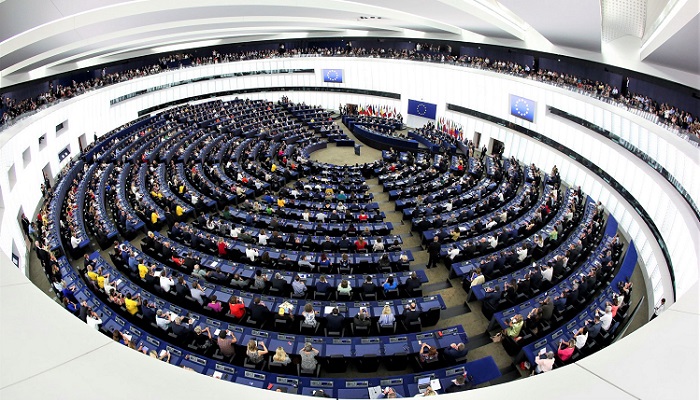
Ms. Ursula von der Leyen
President of the European Commission
Mr. Kyriakos Mitsotakis
Prime Minister of Greece
Mr. Werner Hoyer
President of the European Investment Bank
22 July 2021
Subject: Urgent need to protect significant archaeological finds in the planned metro
station ‘Venizelou’ in Thessaloniki
Dear President of the European Commission,
Dear Prime Minister,
Dear President of the European Investment Bank,
During the construction of the station ‘Venizelou’ of the planned metro line of Thessaloniki in
2012, an archaeological discovery of great significance for our common European cultural
heritage was made. The archaeologists discovered the High Street of Thessaloniki in a
surprisingly good state of preservation, in the heart of the late antique/early Byzantine city (4th9th century). In this period, Thessaloniki was a multicultural city, at the crossroads of East and
West. It served for a short period as one of the capitals of the Roman Empire that united a large
part of Europe, was the second capital of the Byzantine Empire, and for centuries the most
important city of the Balkans.
The ca. 1.500 square meter excavation area contains, among other things, a 77-meter-long street
paved with marble slabs (Decumanus Maximus, the main street of the city), its crossroad with a
vertical road (Cardo), a tetrapylon at the meeting point of the roads, a monumental gatehouse
whose pillars stand up to 2.30 meters high, a public square, and remains of buildings for various
economic activities including merchant shops and the workshops of goldsmiths. This is one of
the most spectacular finds from these periods anywhere in the world. The paramount importance
of this finding is such that the city of Thessaloniki can qualify as a primary UNESCO world
heritage site (the largest and best-preserved Late Antique and Byzantine city anywhere in the
world). Another 15 late antique and Byzantine monuments in Thessaloniki have already been
declared World Heritage Sites by UNESCO.
Despite the significance of this monumental complex and despite the fact that a construction plan
to build the station with the antiquities in situ was approved in 2017, the Greek government plans
to dismantle it into bits and pieces, temporarily move them to storage outside the city, and place
them back after the station’s construction, arguing that this procedure will speed up the
completion of the metro line. The highest administrative court ruled in early May 2021 with the
narrowest of margins (13-12 votes) that the removal does not violate Greek law. It is noteworthy
that the Greek government claimed that the EU funding deadline for the completion and
functioning of all metro’s operations is end of 2023, which is not valid as the EU guidelines on
closure 2014 - 2020 stipulate February 2025.
Europa Nostra, ICOMOS and more than 200 leading experts have warned that this procedure
endangers the antiquities and destroys their integrity and authenticity (basic principles of the
UNESCO 1972 Convention). The dismantling of such a large and complex structure has never
been attempted in the past. The removal plan, approved by the Central Archaeological Council
whose members are appointed by the Greek government, only details the dismantling and
removal of the complex not how it will be returned, how much this will cost, and how long it will
take. Additionally, in case of removal, a new excavation must take place, because under the level
of the complex one estimates another 3 meters of archaeological layers of ca. 700 years; the
dismantling and removal of the antiquities and, if properly conducted, the following excavation
will require more than a year and the whole construction will not end until 2025!
We are concerned about the fact that the Greek government has never informed the European
Commission and the European Investment Bank, which co-funds this project, about the discovery
of this unique archaeological complex, about how the construction will affect the deadlines, and
about the impact that the construction of the metro station will have on our common European
cultural heritage.
Additionally, the removal, destruction of the integrity and authenticity, and possible damage of
this complex directly contradicts the vision of the “New European Bauhaus” that aims to be a
bridge between science/technology and art/culture and to “mobilise designers, architects,
engineers, scientists, students, and creative minds across disciplines to reimagine sustainable
living in Europe and beyond”.
The European Union, the Greek government, and the European Investment Bank should see this
metro station as a challenge to realize the desirable combination of technology (construction of
a modern metro line) and culture (preservation of our common European cultural heritage).
Yours sincerely,
Dimitrios PAPADIMOULIS (The Left)
Alexis GEORGOULIS (The Left)
Konstantinos ARVANITIS (The Left)
Petros KOKKALIS (The Left)
Stelios KOULOGLOU (The Left)
Elena KOUNTOURA (The Left)
Brando BENIFEI (S&D)
Gabriele BISCHOFF (S&D)
Malin BJÖRK (The Left)
Damian BOESELAGER (Greens/EFA)
Leila CHAIBI (The Left)
Giorgos GEORGIOU (The Left)
José GUSMÃO (The Left)
Hannes HEIDE (S&D)
Niyazi KIZILYÜREK (The Left)
Chris MACMANUS (The Left)
Marisa MATIAS (The Left)
Emmanuel MAUREL (The Left)
Costas MAVRIDES (S&D)
Martina MICHELS (The Left)
Manu PINEDA (The Left)
Sira REGO (The Left)
Maria Eugenia RODRÍGUEZ PALOP (The Left)
Domènec RUIZ DEVESA (S&D)
Martin SCHIRDEWAN (The Left)
Helmut SCHOLZ (The Left)
Massimiliano SMERIGLIO (S&D)
Ernest URTASUN (Greens/EFA)
Idoia VILLANUEVA RUIZ (The Left)
Salima YENBOU (Greens/EFA)
Χρησιμοποιούμε cookies για να σας προσφέρουμε την καλύτερη δυνατή εμπειρία πλοήγησης και να αναλύουμε την επισκεψιμότητα της ιστοσελίδας μας. Με την παραμονή σας στην ιστοσελίδα, αποδέχεστε τη χρήση cookies όπως αυτή περιγράφεται στην Πολιτική Cookies ΟΚ